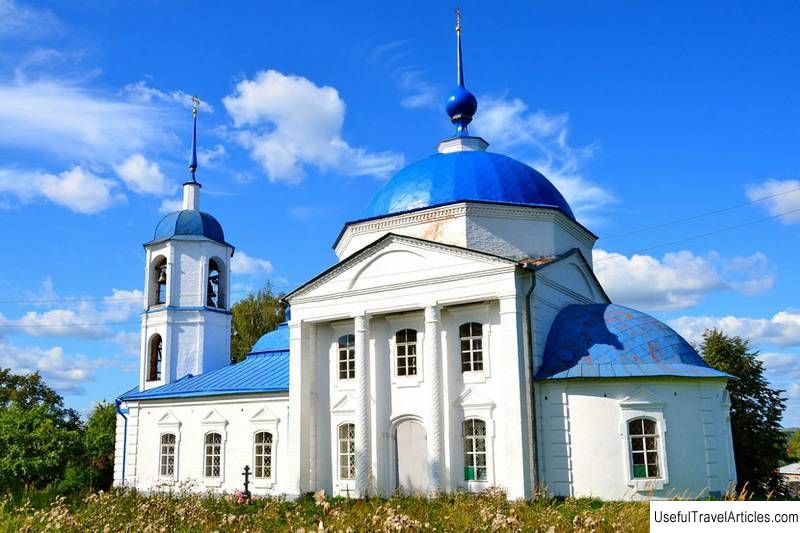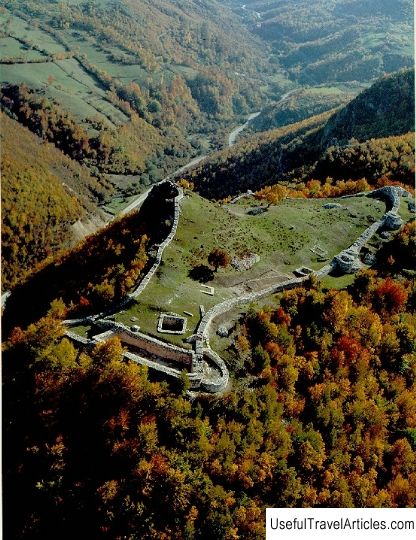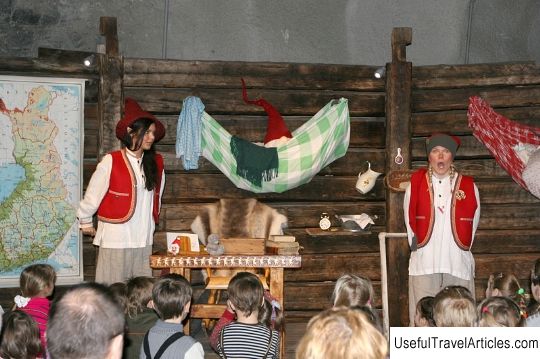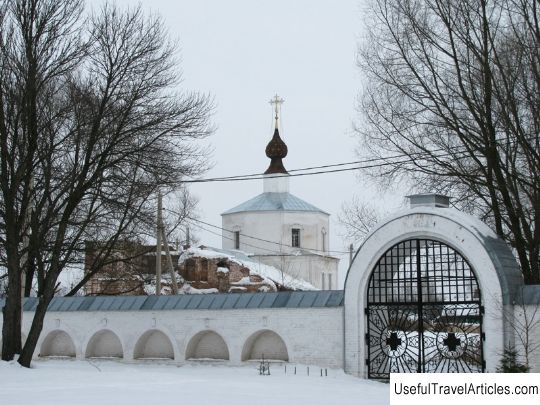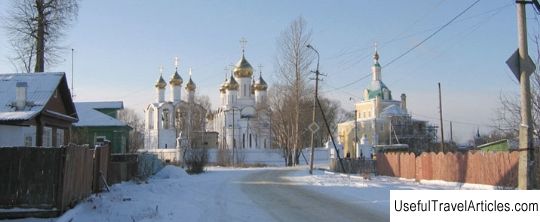Goritsky Monastery description and photos - Russia - Golden Ring: Pereslavl-Zalessky
Rating: 7,8/10 (109 votes) 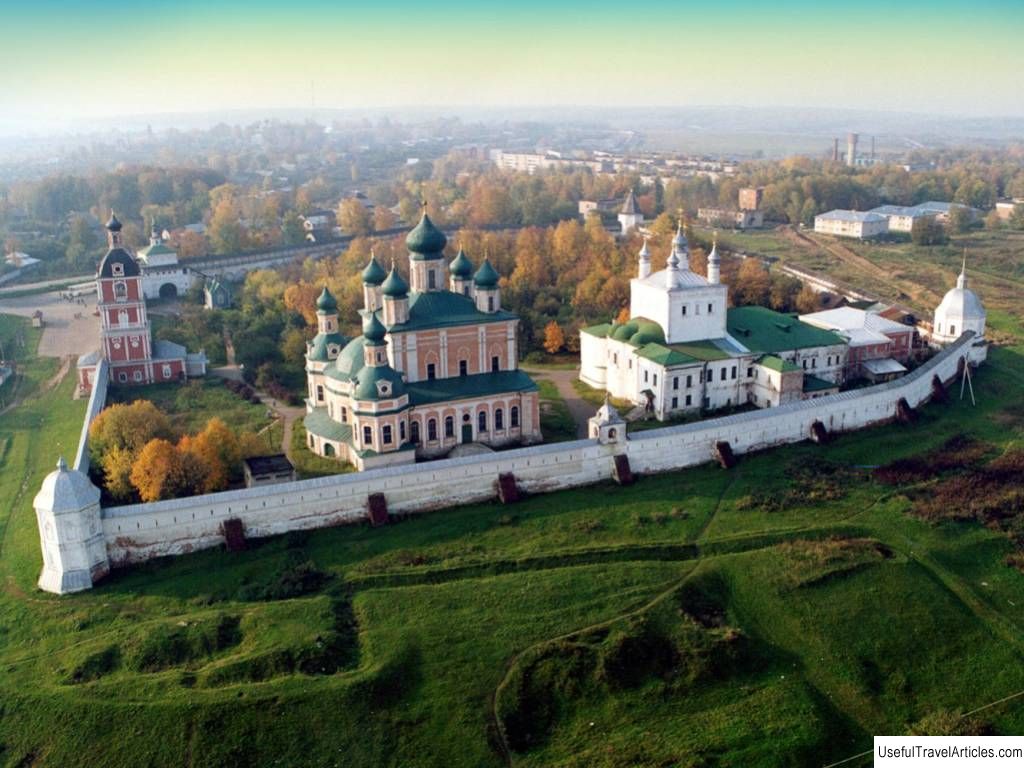
Goritsky Monastery description and photos - Russia - Golden Ring: Pereslavl-Zalessky. Detailed information about the attraction. Description, photos and a map showing the nearest significant objects. Photo and descriptionPereslavl-Zalessky Museum-Reserve is located on the territory of the old Uspensky Goritsky Monastery. Here temples, walls, towers and outbuildings have been preserved since the 17th century, and the richest museum collections are located. History of the monasteryWe do not know the exact date of the foundation of the monastery, but It already existed in the 14th century - it was destroyed by Tokhtamysh . Monastic tradition says that the monastery was rebuilt at the request of Princess Evdokia, wife of Dmitry Donskoy . She escaped during the raid of Tokhtamysh, sailing in a boat to the middle of Lake Pleshcheyevo. The boat with the women was hidden by a thick fog. In memory of this, the princess rebuilt the monastery and established an annual boat procession with the cross to the middle of the lake. Here for a long time the Pereslavl saint - the Monk Daniel asceticised. He was the confessor of Vasily III and the godfather of the future Ivan the Terrible . His relative, Elder Jonah , lived in the Nikitsky monastery, under him the young man studied, then for some time he went to the Pafnutevo-Borovsky monastery, then they return to Nikitsky, and then moved here, to Goritsky. He lived here for many years, inventing his own obedience: walking around the neighborhood and collecting the bodies of the untimely dead on the way. It was on his initiative that the Church of All Saints was built in the monastery - to pray for those dead whose names it was not possible to find out. Since 1744 Pereslavl became the center of the diocese, and the Goritsky monastery was chosen to become the residence bishop. A major restructuring was started, work was carried out day and night. But in 1788 the diocese was abolished. The construction stopped, the main values of the sacristy were transported to Moscow. The monastery was almost forgotten for a long time, some of the buildings that had not been completed yet were dismantled. In the 19th century, a Theological school was placed here, but this did not save the monastery - according to eyewitnesses, by the beginning of the 20th century it was a picture of complete desolation. After the revolution, the territory was almost immediately transferred to the Pereslavl Museum . Museum Exposition The Pereslavl Museum was opened in 1919, although one of its branches - the Botik of Peter I - is the oldest provincial Russian museum and has been operating since 1803. In the 1980s, a large-scale restoration of all the monastery buildings was carried out under the leadership of I. B. Purishev. Goritsky Monastery was one of the stone fortresses that surrounded and defended wooden Pereslavl. The walls were built in the 16th century and renovated in the 17th century. Now there are five towers and two entrance gates , one with a gate Nikolskaya Church . You can climb the wall, and a beautiful view of Pereslavl opens up from there. You can also climb the bell tower of the Epiphany Church of the 18th century - there is an observation deck here. The main exposition is open in the building of the former religious school of the 19th century. This is collection of icon painting . First of all, these are the icons collected in the museum from the churches of Pereslavl district that were closed and destroyed after the revolution. Pereslavl had its own icon-painting school, which in the 16th century rightfully competed with the Moscow one. However, there are also works by Moscow masters: icons donated by Ivan the Terrible to the Fedorovsky Monastery are kept here. The second part of this exposition is a collection of Russian painting of the 18th-20th centuries. It was started by the Pereslavl philanthropist, merchant of the first guild Ivan Petrovich Sveshnikov . All his life he collected paintings, in his collection there are works by V. Polenov, I. Shishkin, V. Makovsky, I. Pryanishnikov and others. Most of his collection went to the Rumyantsev Museum, but some remained in Pereslavl. Buried on the territory of the monastery famous painter and graphic artist D. Kardovsky , author of book illustrations for Russian classics, sketches for theatrical performances and canvases dedicated to the theme of Pushkin and the Decembrists. His work and the work of his students occupied three exhibition halls. In the Refectory there is a unique exhibition of Russian wooden carvings of the 16th-17th centuries . It is generally accepted that an Orthodox icon can only be painted. This is not so - in the Pereslavl Territory, carved icons and sculptural compositions for churches were traditionally created: the famous images of Nikola Mozhaisky or Christ in a dungeon. In addition, there are carved details of iconostases and even secular sculpture - wooden details of the fence of the house from the Bektyshevo estate. There is also a collection of decorative and applied art of the Russian village of the 19th and early 20th centuries. All Saints Church - a massive building of the late 17th century with a refectory, one of the oldest buildings of the monastery. The original white stone decor has been preserved on it, but the upper part has been heavily rebuilt and does not harmonize too much with the main volume. Here is a collection of jewelry from the 16th-19th centuries. from the monastery vestries . You can see gold and silver church utensils, icon frames and book bindings, products of famous gold embroidery workshops - embroidered icons and vestments, precious donations and contributions that the tsars and their entourage made to the monastery treasuries. Another part of this exhibition is a collection of copper casting from the 18th-20th centuries . The second exhibition in this building is a collection of items from two ruined noble estates of the Pereslavl district. These are Smolenskoye - the Pig-Kozlovsky estate, one of the richest estates in the Yaroslavl province, and Bektyshevo - the Samsonov estate. These are collections of paintings, furniture, porcelain, memorable relics of the owners - everything that reminds us now of the life of a Russian estate of the 19th century. Cathedral of the Assumption - on this place the temple existed since 1520 and was a small three-headed. In the middle of the 18th century, a large and pompous new church was built in its place in its own style, which scholars call the "Pereslavl Baroque". It differs from the traditional temple in that two more side-altars in the form of turrets are attached to the altar, also crowned with domes - as a result, the whole structure acquires a special scale and solemnity. From the western entrance, there are traces of another unfinished part - Gethsemane, designed to remind of the sufferings of Christ. It was never completed and eventually dismantled. The interior of the cathedral is decorated in the Baroque style: rich stucco molding with imperial monograms and a carved gilded iconostasis. Now it is run by the museum, sometimes it hosts divine services, it is open for inspection only in the summer. In addition, on the territory of the monastery there are exhibitions telling about the life of the district Pereslavl at the beginning of the XX century, about the nature of the Pereslavl region and about the circumnavigation of the English ship "Beagle" , which was traveled by young Charles Darwin. Recently, with the support of the city administration, an interactive exhibition about the Great Patriotic War appeared: a film dedicated to Pereslavl - participants in the war, an electronic database of the museum's military funds, photographs and personal belongings of front-line soldiers . Three exhibitions are dedicated to the museum work itself . The first is a part of open museum funds, where visitors are usually not allowed. The second is an exhibition of gifts to the museum over the past 10 years. These are mainly paintings by contemporary artists dedicated to Pereslavl. And finally, the third is a documentary story about the history of the museum over the past 100 years and the role of museum workers in the preservation of cultural heritage. The museum shares the monastery territory with the Orthodox Church. The gateway Nikolskaya Church of the 17th-18th centuries is now active. This is a brick church built in the Moscow Baroque style. It has hardly been used since the 18th century, was restored in the 80s of the 20th century, and since 2012 it has been officially transferred to the church. Now it is a bishop's courtyard ; the Bishop of Pereslavl regularly serves here. Interesting factsIn Soviet times, the museum had an orchard-nursery, which collected up to 5 tons of apples annually. Nowadays, the garden is barely tended, but the trees are still bearing fruit. Not so long ago, the church revived the tradition of religious processions in honor of the rescue of Princess Evdokia from Tokhtamysh with a prayer service on boats in the center of Lake Pleshcheyevo.                              
We also recommend reading Monastery of John the Baptist description and photos - Russia - Siberia: Novosibirsk Topic: Goritsky Monastery description and photos - Russia - Golden Ring: Pereslavl-Zalessky. |


